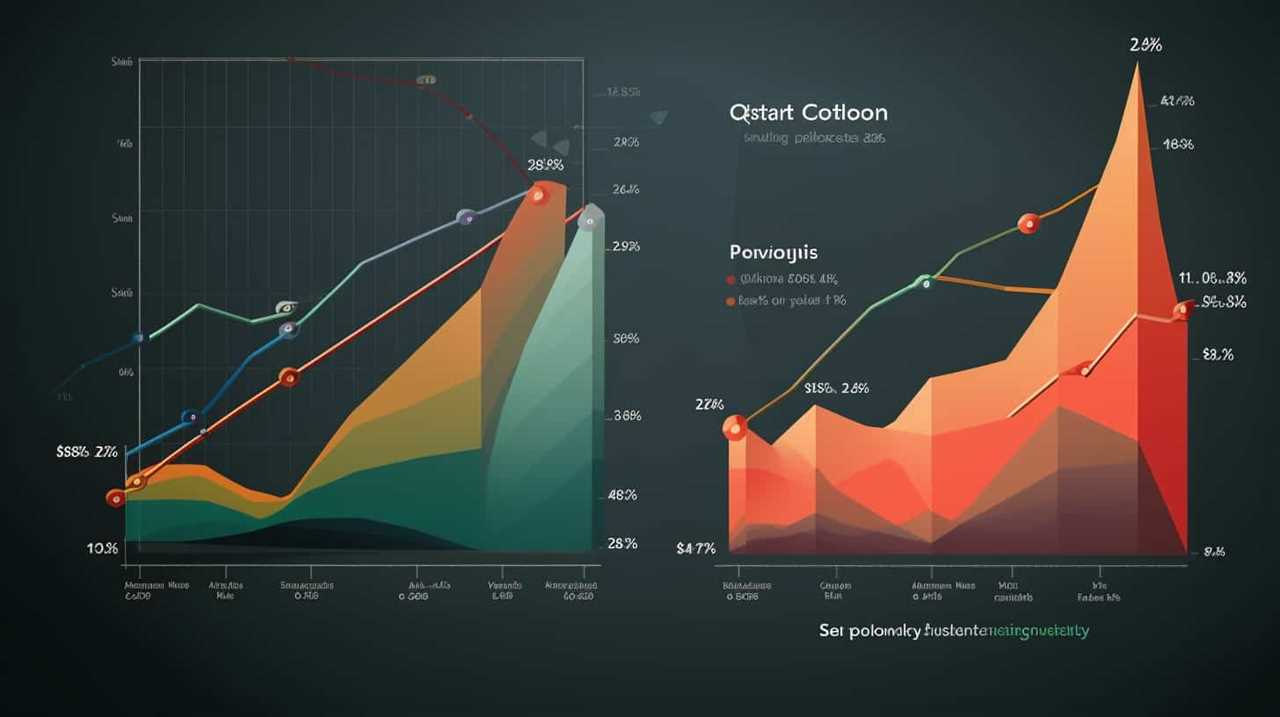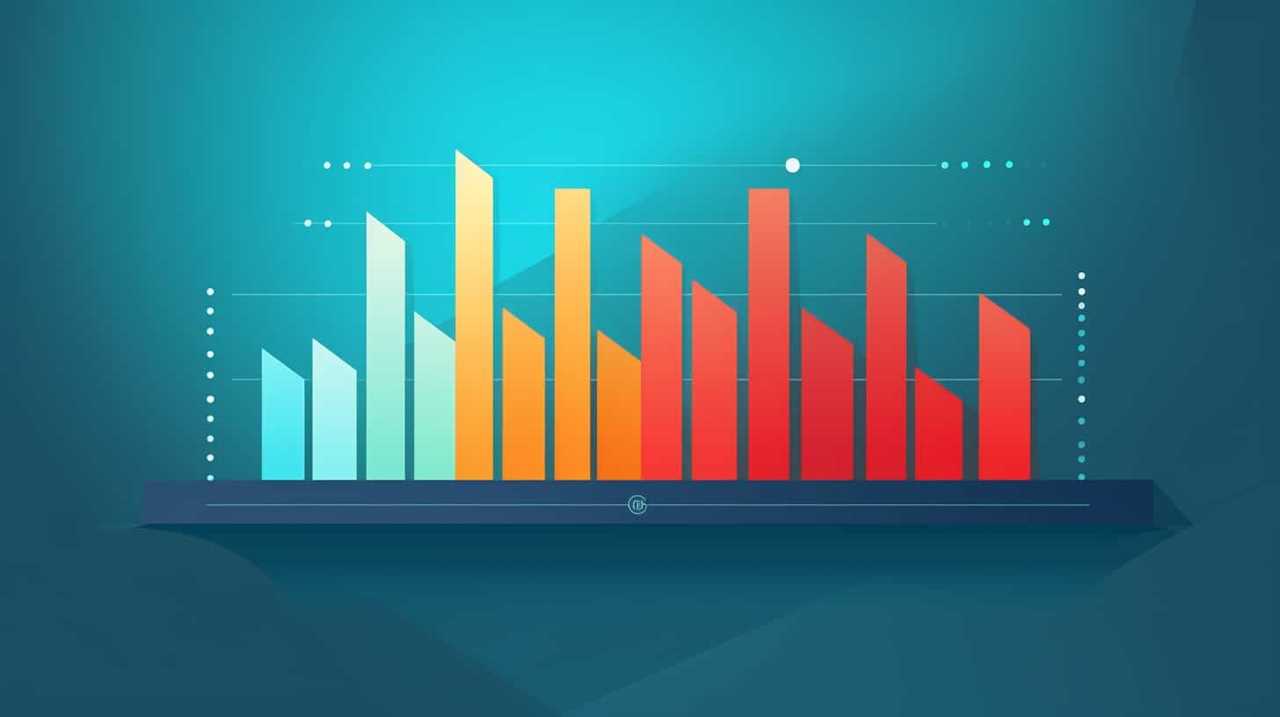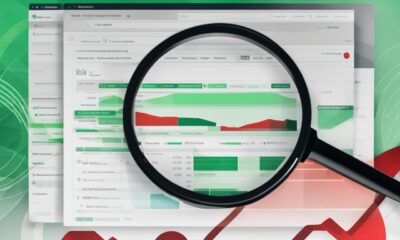Advertising
Endemic vs Programmatic Advertising: Choose Wisely

Curious why programmatic advertising is all the rage, projected to reach a whopping $550 billion in ad revenue come 2023? Well, businesses are investing big bucks in this automated ad sorcery as they spot a treasure trove for marketing triumph. Wanna know more? Keep reading to uncover the secrets behind this advertising phenomenon.
Key Takeaways:
- Programmatic advertising is expected to exceed $550 billion in ad spend by 2023.
- Businesses are increasingly adopting programmatic advertising for its potential marketing success.
What is Programmatic Advertising?
Programmatic advertising is the automated process of placing digital ads across the internet, allowing businesses to target their marketing efforts to specific audiences. With programmatic advertising, we can reach our target audiences more effectively by utilizing the entire internet instead of relying on a single website for ad placement. This automated approach offers numerous benefits, including increased impressions and visibility for our marketing campaigns.
“Programmatic advertising revolutionizes the way we reach our customers. It brings efficiency, precision, and scale to our marketing efforts, ensuring that our messages are delivered to the right people at the right time.”
By leveraging programmatic advertising, we can optimize our ad spend and maximize the impact of our campaigns. Meister Media provides two programmatic-based products, Audience Extension and Retargeting, which enable businesses to effectively connect with their target audiences.
The Power of Programmatic Advertising
Programmatic advertising offers several key advantages:
- Automated Process: Programmatic advertising streamlines the ad buying process, saving time and resources.
- Precise Targeting: We can define specific target audiences based on demographics, behavior, and other relevant criteria.
- Increased Reach: By utilizing the entire internet, programmatic advertising provides access to a larger audience.
- Real-Time Optimization: Campaigns can be adjusted in real-time to achieve optimal results.
- Effective Tracking and Measurement: Programmatic advertising platforms offer robust tracking and measurement capabilities, allowing us to analyze the performance of our campaigns.
| Advantages of Programmatic Advertising | Disadvantages of Programmatic Advertising |
|---|---|
| Efficient ad buying process | Reliance on technology |
| Precise targeting of audiences | Potential for ad fraud |
| Increased reach and visibility | Potential privacy concerns |
| Real-time optimization | Complexity and learning curve |
| Robust tracking and measurement | Ad blocking and ad fatigue |
Despite the potential challenges, programmatic advertising remains a powerful tool for businesses looking to connect with their target audiences efficiently and effectively. By leveraging the capabilities of programmatic advertising, we can take our marketing efforts to the next level and achieve greater success.

Stay tuned for the next section, where we delve into the details of Audience Extension, the programmatic-based product that helps businesses reach new potential customers.
Understanding Audience Extension
At Meister Media, we offer Audience Extension as one of our programmatic-based products, providing businesses with a powerful tool to reach new potential customers. With Audience Extension, you can leverage first-party data to market your products and services to a preferred audience, expanding your reach and driving marketing success.
So how does Audience Extension work? Advertisers define their target audience based on various criteria such as business type, location, services, and more. Using this information, Meister Media builds a targeted list of companies that fit the specified criteria.
Once the targeted list is created, Meister Media’s platforms deliver your ads exclusively to the companies on the list, ensuring that your message reaches the right audience. This enables you to connect with new potential customers who are likely to be interested in your products or services. Audience Extension is an effective strategy for brand awareness campaigns and acquiring valuable first-party data.
Benefits of Audience Extension
Audience Extension offers several key benefits for businesses:
- Reach new potential customers: By expanding your audience reach, Audience Extension allows you to connect with customers who may not be familiar with your brand yet, opening up new opportunities for growth.
- Targeted list: With Audience Extension, your ads are carefully targeted and delivered only to the companies that meet your specific criteria. This ensures that your message resonates with your intended audience, increasing the effectiveness of your campaigns.
- Brand awareness: Audience Extension is particularly effective for brand awareness campaigns. By reaching new potential customers who fit your target audience profile, you can increase visibility and build awareness for your brand.
With the power of Audience Extension, businesses can extend their marketing efforts beyond their existing customer base and reach new potential customers who are most likely to be interested in what they have to offer. Harness the potential of Audience Extension to maximize the impact of your marketing campaigns and drive success.

Exploring Retargeting
In our digital age, capturing and maintaining the attention of potential customers is essential for business success. One effective strategy for achieving this is through retargeting. By using a tracking pixel on a user’s browser, businesses can serve ads to that user throughout their internet browsing, increasing brand visibility and engagement.
Retargeting enables businesses to keep their brand and/or products in front of their ideal customer prospects by strategically placing ads on various websites and social media feeds. This targeted approach ensures that your message reaches individuals who have already shown interest in your brand or products, increasing the likelihood of conversions and sales.
When combined with endemic advertising, such as display ads on specific websites, retargeting can significantly enhance your marketing efforts. By keeping your brand visible to potential customers during their online journey, retargeting helps to build familiarity and trust, ultimately increasing the chances of conversion.
How Retargeting Works
To implement retargeting, businesses use a tracking pixel or code snippet placed on their website. When a user visits the site, the tracking pixel drops a cookie on their browser, allowing the business to recognize and serve ads to that user as they continue browsing the internet.
Here’s a simplified breakdown of the retargeting process:
- A user visits your website and triggers the tracking pixel.
- A cookie is placed on the user’s browser, identifying them as a potential customer.
- As the user visits other websites or social media platforms that are part of the retargeting network, ads related to your brand or products are displayed.
- The user is reminded of your brand and encouraged to revisit your website, increasing the likelihood of conversion.
This strategic approach allows businesses to reach potential customers who have already demonstrated an interest in their offerings, maximizing the impact of their marketing campaigns.
The Benefits of Retargeting
Retargeting offers several benefits that can boost your brand visibility and improve marketing outcomes:
- Increased brand visibility: By displaying ads to users throughout their internet browsing, retargeting ensures your brand stays top of mind and increases the likelihood of conversions.
- Enhanced engagement: When potential customers see your brand repeatedly, they are more likely to engage with your ads, click through to your website, and make a purchase or take the desired action.
- Expanded reach: Retargeting allows businesses to extend their reach beyond their own website, effectively serving ads to potential customers on various platforms they visit regularly.
- Improved ROI: By targeting individuals who have already shown interest in your brand or products, retargeting increases the chances of conversion, resulting in a higher return on investment.
| Benefits of Retargeting | |
|---|---|
| Increased brand visibility | ✓ |
| Enhanced engagement | ✓ |
| Expanded reach | ✓ |
| Improved ROI | ✓ |
By leveraging retargeting, businesses can create a powerful digital marketing strategy that keeps their brand front and center in the minds of potential customers, increasing the likelihood of conversions and long-term customer relationships.

Tips for Effective Programmatic Advertising
When it comes to programmatic advertising, implementing the right strategies can significantly enhance your marketing efforts and increase conversions. To maximize the impact of your programmatic campaigns, we recommend using both Audience Extension and Retargeting, two powerful tools offered by Meister Media. By combining these tactics, you can boost click engagement by 20%-40% and achieve better results.
Here are some tips and best practices to consider:
- Utilize Audience Extension: With Audience Extension, you can reach new potential customers by precisely targeting your preferred audience. Define your target audience based on specific criteria such as location, business type, or services. Meister Media will build an audience and deliver your ads exclusively to companies that fit your criteria. Audience Extension is particularly effective for brand awareness campaigns and capturing more first-party data.
- Differentiate your retargeting creative: It’s crucial to differentiate your retargeting efforts from endemic advertising. Develop compelling and personalized creative content specifically tailored to your retargeting audience. This strategy helps to ensure that your ads stand out and capture the attention of potential customers who have already shown interest in your brand.
- Use retargeting as a conversion strategy: Retargeting is a powerful conversion tool. By showing ads to users who have previously interacted with your brand or website, you can nudge them towards making a purchase or completing a desired action. Implement retargeting campaigns strategically at different stages of the customer journey to increase conversions and drive revenue.
- Consider your objectives and target audience: When choosing between Audience Extension and Retargeting, it’s essential to align your strategies with your marketing objectives and target audience. Determine whether your goal is to reach new potential customers or re-engage with existing ones. Understanding your objectives and target audience will help you make informed decisions and optimize your programmatic advertising campaigns.
Tip: Integrating both Audience Extension and Retargeting into your programmatic advertising campaigns can optimize your reach and drive meaningful results. By applying best practices and considering your specific goals, you can increase click engagement, conversions, and ultimately maximize the ROI of your programmatic advertising efforts.
Programmatic Advertising Tips in Action
Let’s take a closer look at how implementing these tips can lead to successful programmatic advertising campaigns:
| Objective | Strategy | Result |
|---|---|---|
| Increase brand awareness | Utilize Audience Extension to target a specific audience based on business type and location | Expanded brand reach and increased awareness among desired audience segments |
| Drive conversions | Implement retargeting campaigns with tailored creative for users who have demonstrated interest in your brand | Higher conversion rates and increased revenue from retargeted audience |
| Maximize ROI | Combine Audience Extension and Retargeting while considering specific objectives and target audience | Optimized reach, increased engagement, and improved return on investment |
By following these programmatic advertising tips and leveraging the capabilities of Audience Extension and Retargeting, you can unlock the full potential of your programmatic campaigns and achieve exceptional results.

Remember, effective programmatic advertising relies on understanding your audience, creating compelling content, and utilizing the right tools provided by Meister Media. Combine best practices with strategic thinking to enhance your marketing success and drive conversions.
Defining Programmatic Advertising
Programmatic advertising revolutionizes the media buying process by leveraging automation-based technology. It encompasses various platforms such as Demand Side Platforms (DSPs), Supply Side Platforms (SSPs), Data Management Platforms (DMPs), and Ad Exchanges. Unlike traditional methods, programmatic advertising relies on advanced algorithms and software to automate the buying and selling of ad inventory in real-time.
The Components of Programmatic Advertising
Programmatic advertising involves several key components:
- Demand Side Platforms (DSPs): These platforms enable advertisers to manage and optimize their programmatic ad campaigns by accessing multiple ad exchanges.
- Supply Side Platforms (SSPs): SSPs enable publishers to monetize their ad inventory by connecting them to ad exchanges and facilitating the sale of impressions.
- Data Management Platforms (DMPs): DMPs collect, analyze, and organize data from various sources to create detailed audience profiles. These profiles help advertisers target specific audiences effectively.
- Ad Exchanges: Ad exchanges act as a marketplace where advertisers and publishers can buy and sell ad inventory through real-time bidding.
By leveraging these components, programmatic advertising streamlines the ad buying process, eliminates manual negotiations, and enables precise targeting to deliver personalized and relevant ads to consumers.
Programmatic advertising streamlines the ad buying process, eliminates manual negotiations, and enables precise targeting to deliver personalized and relevant ads to consumers.
Now let’s take a closer look at how programmatic advertising works:
The Mechanics of Programmatic Advertising
Programmatic advertising operates through a complex series of processes:
- Ad Request: When a user visits a website or app, an ad request is sent to the Ad Exchange via the Supply Side Platform (SSP).
- Auction: Advertisers interested in showing their ads to the user participate in a real-time auction through the Demand Side Platform (DSP), where they bid for the impression.
- Ad Serving: The winning bidder’s ad is immediately delivered to the user’s device, thanks to real-time bidding and ad serving technologies.
- Ad Tracking and Optimization: Advertisers track the performance of their ads in real-time, allowing them to optimize campaigns and adjust bidding strategies for maximum effectiveness.
This automated process ensures that ads are shown to the right audience at the right time, maximizing the impact of marketing efforts and delivering measurable results.
To visualize the process of programmatic advertising, here’s an illustrative diagram:

| Advantages | Description |
|---|---|
| 1. Precise Targeting | Programmatic advertising allows advertisers to target specific audience segments based on demographic, behavioral, and contextual factors. |
| 2. Real-Time Optimization | The ability to track and measure the performance of ads in real-time enables advertisers to optimize campaigns and allocate budgets effectively. |
| 3. Increased Efficiency | The automation of the ad buying process improves efficiency by eliminating manual negotiations and reducing administrative workload. |
| 4. Enhanced Reach | Programmatic advertising offers access to a vast network of publishers, allowing advertisers to reach a wider audience across multiple channels and devices. |
Programmatic advertising has transformed the way marketers approach digital advertising, providing unparalleled targeting capabilities, automation, and efficiency. By harnessing the power of automation-based technology, businesses can optimize their ad campaigns, engage their target audiences, and achieve higher returns on their advertising investments.
The Rise of Programmatic Advertising
Programmatic advertising has experienced a remarkable surge in popularity since its emergence in the mid-90s. With the advancements in AI, automation, and deep learning, it has become an incredibly powerful tool for marketing and advertising. In fact, programmatic advertising is widely considered to be the future of the industry.
This rise in popularity can be attributed to several factors. Firstly, programmatic advertising allows for a more targeted and precise approach to reaching audiences. By leveraging data and automation, businesses can deliver their messages to the right people at the right time, significantly increasing the effectiveness of their marketing campaigns.
Furthermore, programmatic advertising offers increased efficiency and scalability. It eliminates the need for manual ad placement and negotiation, allowing marketers to focus on strategic planning and optimization. This not only saves time but also enables businesses to reach a larger audience with their advertising efforts.
The increased popularity of programmatic advertising has also been driven by its ability to deliver measurable results. With real-time data and analytics, advertisers can track the performance of their campaigns, optimize their targeting strategies, and make data-driven decisions to maximize their return on investment.
Advantages of Programmatic Advertising:
- Targeted and precise audience reach
- Increased efficiency and scalability
- Measurable results and real-time analytics
It comes as no surprise that the global spending on programmatic advertising is expected to surpass an impressive $493 billion by the end of 2022. This substantial growth underscores the increasing recognition of programmatic advertising as a vital component of successful marketing and advertising strategies.

As programmatic advertising continues to evolve and innovate, its influence in the marketing and advertising landscape will only continue to rise. Businesses that embrace this technology-driven approach will have a significant advantage in reaching their target audiences effectively and efficiently.
Programmatic Advertising vs Display Advertising
When it comes to digital marketing, programmatic advertising and display advertising are two distinct approaches that businesses can take to reach their target audience. While there are similarities between the two, it’s important to understand the differences to make informed decisions about your marketing strategy.
Programmatic Advertising
Programmatic advertising is an automated process of buying and placing ads across the internet. It uses data and technology to target specific audiences, allowing businesses to reach the right people at the right time. This method offers a wide reach and more impressions compared to advertising on a single website. Programmatic advertising can encompass various ad formats, including display ads.
Display Advertising
Display advertising, on the other hand, focuses specifically on ad formats that are visually engaging and are typically displayed on websites, apps, or social media platforms. These ads can include banner ads, video ads, or interactive ads. Display advertising is a broader term that includes both programmatic and non-programmatic methods of ad buying.
Programmatic ads can be considered as a subset of display advertising. While programmatic advertising refers to the automated process, display advertising encompasses a wider range of ad formats.
It’s important to note that programmatic ads can also be display ads, and vice versa. In some cases, programmatic advertisements can be displayed in the form of banners or videos, while non-programmatic display ads can be manually placed on specific websites or platforms.
Here’s a visual representation of the relationship between programmatic advertising and display advertising:
**Table – Programmatic Advertising vs Display Advertising**
| Programmatic Advertising | Display Advertising |
|---|---|
| Automated process | Includes programmatic and non-programmatic methods |
| Uses data and technology to target audiences | Visually engaging ad formats |
| Offers wide reach and more impressions | Can encompass various ad formats |

Understanding the differences between programmatic advertising and display advertising can help you make wise decisions about your marketing strategy. Consider your goals, target audience, and available resources to determine which approach is best suited for your business.
Pros and Cons of Programmatic Advertising
When it comes to programmatic advertising, there are several advantages and disadvantages to consider. Let’s take a closer look at the benefits and drawbacks of this highly efficient marketing method.
Advantages of Programmatic Advertising:
- High Efficiency: Programmatic advertising streamlines the ad buying process, allowing us to reach our target audience with ease and precision. With automated technology handling the heavy lifting, we can save time and resources.
- Increased Reach: By leveraging programmatic advertising, we can extend our reach beyond a single website and tap into the entire internet. This provides us with more impressions and visibility, maximizing the impact of our marketing efforts.
- Flexibility: Programmatic advertising offers a high degree of flexibility in terms of ad placement, targeting options, and budget allocation. We have the freedom to customize our campaigns based on our unique objectives and preferences.
- Better ROI: Compared to traditional advertising methods, programmatic advertising often delivers a higher return on investment. The advanced targeting capabilities enable us to connect with the right audience at the right time, leading to increased conversions and sales.
- Real-Time Measurement: With programmatic advertising, we have access to real-time measurement and analytics. This allows us to monitor the performance of our campaigns, make data-driven decisions, and optimize our strategies for better results.
Disadvantages of Programmatic Advertising:
- Lack of Human Control: While programmatic advertising is highly efficient, it relies heavily on technology and automation. This lack of human control can be a disadvantage for some advertisers who prefer a more hands-on approach to their marketing campaigns.
Programmatic advertising offers numerous advantages, including high efficiency, increased reach, and better ROI. However, it’s important to consider the potential drawback of reduced human control. By weighing these pros and cons, we can make informed decisions about incorporating programmatic advertising into our marketing strategies.
Programmatic advertising provides us with the tools and capabilities to target our audience more precisely than ever before. With its high efficiency and increased reach, this modern approach to advertising can take our marketing efforts to new heights.

Take a moment to imagine a high-tech retail environment where digital displays seamlessly integrate with the physical space, effortlessly drawing shoppers’ attention. This transformation has revolutionized the way in-store advertising is perceived, replacing mundane static signage with captivating, animated messages that leave a lasting impression.
The benefits of this evolution are not limited to brands. Shoppers also benefit from the immersive experiences offered by dynamic displays. They are exposed to a range of engaging content that elevates their shopping journey, amplifying the overall brand experience.
Key Benefits of Programmatic In-Store Advertising Transformation:
- Greater engagement with captivating visual displays
- Real-time customization and personalization based on shopper context
- Enhanced brand storytelling and connection building
- Increased impact and influence on consumer behavior
- Improved measurement and tracking capabilities
With the evolution of in-store advertising, brands have a powerful tool at their disposal to create memorable experiences and build meaningful connections with their target audience. By leveraging dynamic displays and programmatic DSPs, businesses can elevate their presence within retail environments and drive exceptional marketing results.
Conclusion
In conclusion, programmatic in-store advertising has proven to be a successful medium for reaching target audiences in highly trafficked retail environments. The effectiveness of this advertising method has attracted non-endemic brands who recognize the benefits it offers. By leveraging programmatic in-store advertising, brands can tap into larger audiences, enjoy high-quality audience demographics, create contextual impact, and measure campaign performance.
Launching an effective in-store digital out-of-home (DOOH) campaign requires careful strategic planning. Brands need to identify their target audience, develop contextually relevant creative content, and utilize retargeting techniques to amplify their campaign impact. With the right approach, programmatic in-store advertising can deliver impressive results and drive desired outcomes.
As the advertising landscape continues to evolve, programmatic in-store advertising stands out as a compelling choice for brands looking to make a lasting impression in retail environments. The combination of cutting-edge technology, extensive reach, and precise audience targeting makes it an invaluable tool for marketers. By embracing programmatic in-store advertising, brands can strengthen their market presence, engage their target audience effectively, and ultimately achieve marketing success.
Endemic advertising focuses on specific ad formats, while programmatic advertising is an automated process of ad buying. Programmatic advertising is the automated process of placing digital ads across the internet, allowing businesses to target specific audiences.
Audience Extension helps businesses reach new potential customers by leveraging first-party data and sending targeted ads to preferred audiences.
Retargeting involves using a tracking pixel to serve ads to users throughout their internet browsing, keeping the brand in front of ideal customer prospects.
Businesses should consider using both Audience Extension and Retargeting, combining endemic and retargeting campaigns to increase click engagement.
Programmatic advertising refers to the use of automation-based technology in the media buying process, utilizing platforms like DSPs, SSPs, DMPs, and Ad Exchanges. Programmatic advertising has gained popularity with advancements in AI and automation, becoming a powerful tool for marketing and advertising.
Programmatic advertising is the automated process of ad buying, while display advertising focuses on specific ad formats, although there are overlaps between the two.
Programmatic advertising offers high efficiency, better ROI, increased flexibility, and precise audience targeting capabilities.
In-store advertising has transformed from static signage to dynamic displays that are automated and transacted through programmatic DSPs, offering a richer experience for shoppers.
Programmatic in-store advertising is a valuable medium for reaching target audiences, offering larger audiences, high-quality demographics, and contextual impact.FAQ
What is the difference between endemic and programmatic advertising?
What is programmatic advertising?
How does Audience Extension work?
How does Retargeting work?
How can I get the most out of programmatic advertising?
What is the definition of programmatic advertising?
How has programmatic advertising evolved over time?
What is the difference between programmatic advertising and display advertising?
What are the advantages of programmatic advertising?
How has in-store advertising evolved?
What is the conclusion about programmatic in-store advertising?
Advertising
How Do I Pass an Seo Interview

The famous quote ‘knowledge is power’ is widely recognized. This rings especially true when it comes to excelling in an SEO interview.
We know you’re eager to liberate yourself from the anxiety of job hunting and impress potential employers with your SEO expertise. That’s why we’re here to share essential concepts, effective strategies, and expert tips to help you nail that interview and secure your dream SEO job.
Let’s dive in and unleash your SEO potential!
Key Takeaways
- Understanding SEO best practices, core components, and the importance of SEO tools and analytics
- Advanced keyword analysis, understanding keyword intent, and targeting high-potential keywords
- Content creation, conducting SEO audits, and optimizing factors like page load speed and mobile-friendliness
- Mastering technical SEO by focusing on website architecture, site visibility, and mobile optimization
Essential SEO Concepts
In this section, we’ll explore the fundamental principles and core components of SEO. Understanding SEO best practices is essential for achieving success in digital marketing.

SEO tools and analytics play a crucial role in optimizing our website’s performance and improving our online visibility. By utilizing these tools, we can analyze important data such as keyword rankings, website traffic, and user behavior. This valuable information allows us to make data-driven decisions and continuously improve our SEO strategies.
Implementing SEO best practices and leveraging SEO tools and analytics is key to staying ahead in the competitive online landscape.
Now that we’ve covered the essential concepts of SEO, let’s dive into the next section, which will focus on effective keyword research strategies.
Effective Keyword Research Strategies
Now let’s explore effective keyword research strategies to further enhance our SEO efforts and drive targeted organic traffic to our website.

One of the key strategies is advanced keyword analysis. This involves going beyond basic keyword research and delving deeper into understanding the intent behind the keywords. By analyzing search volume, competition, and relevance, we can identify high-potential keywords that will bring in the most relevant traffic.
Additionally, long tail keyword targeting is another powerful strategy. Long tail keywords are longer and more specific phrases that have less competition and higher conversion rates. By targeting these niche keywords, we can attract highly qualified visitors who are more likely to convert into customers.
On-Page Optimization Techniques
To continue our discussion on effective SEO strategies, let’s dive into the realm of on-page optimization techniques.
On-page optimization plays a crucial role in improving a website’s visibility and ranking in search engine results pages (SERPs). One key aspect of on-page optimization is content creation. By creating high-quality, relevant, and engaging content, you can attract more organic traffic and keep visitors on your site longer.

Additionally, conducting an SEO audit is essential to identify areas for improvement on your website. This includes analyzing factors such as page load speed, mobile-friendliness, URL structure, and metadata.
Mastering Technical SEO
Continuing our exploration of effective SEO strategies, let’s delve into the realm of mastering technical SEO with a focus on optimizing website performance and structure.
A well-designed website architecture is crucial for search engines to understand and crawl your site effectively. It involves organizing your website’s pages, URLs, and navigation in a logical and user-friendly manner. This can improve your site’s visibility and accessibility, ultimately boosting its search rankings.
Additionally, mobile optimization is essential in today’s digital landscape, as more and more users access the internet through their smartphones. Ensuring that your website is responsive and mobile-friendly won’t only enhance the user experience but also align with search engines’ preferences, leading to higher rankings.

Nailing SEO Interview Questions
Let’s tackle SEO interview questions head-on to ensure we nail them with confidence and expertise.
When preparing for an SEO interview, it’s important to have a solid understanding of the industry and its best practices. One of the most common SEO interview mistakes isn’t being well-prepared. To avoid this, you should familiarize yourself with the latest SEO trends, algorithms, and tools.
Additionally, it’s crucial to have a clear understanding of the core concepts of SEO, such as keyword research, on-page optimization, and link building.
To further enhance your chances of success, practice answering common SEO interview questions and have specific examples ready to demonstrate your skills and knowledge.

Frequently Asked Questions
What Are Some Common Challenges Faced in Implementing SEO Strategies and How Can They Be Overcome?
Implementing SEO strategies can be challenging due to technical issues and competition. However, we can overcome these obstacles by conducting thorough competitor analysis and addressing any technical issues promptly.
How Can Social Media Platforms Be Integrated Into an SEO Strategy?
Social media platforms can be integrated into an SEO strategy by leveraging social media engagement to drive traffic and improve search engine rankings. Content marketing strategies can be used to create and promote valuable content on social media platforms, boosting visibility and engagement.
What Are Some Effective Ways to Measure the Success of an SEO Campaign?
To measure the success of an SEO campaign, we track key performance indicators such as organic traffic, keyword rankings, and conversion rates. These metrics give us valuable insights into the effectiveness of our strategies.
Can You Provide Some Tips for Optimizing Websites for Voice Search?
When optimizing websites for voice search, key considerations include understanding natural language, using long-tail keywords, and optimizing for featured snippets. Voice search optimization strategies involve creating conversational content and improving site speed for a seamless user experience.

How Important Is Link Building in SEO and What Are Some Best Practices for Building High-Quality Backlinks?
Link building is a crucial aspect of SEO. It helps improve our website’s visibility and rankings. Anchor text plays a significant role in link building, and acquiring natural backlinks through quality content and outreach strategies is essential.
Conclusion
In conclusion, mastering the art of SEO is like navigating a vast ocean of information. By understanding essential concepts, conducting effective keyword research, implementing on-page optimization techniques, and mastering technical SEO, you can set sail toward success.
Just like a skilled sailor, your ability to navigate this ever-changing landscape will determine your success in an SEO interview. So, prepare yourself, equip your knowledge, and confidently set sail into the world of SEO.
Advertising
How Do I Get Free Seo Keywords

Are you tired of spending a significant amount of money on SEO keywords? Your search ends here! Discover the methods to acquire SEO keywords without any cost.
In this article, we’ll share the secrets to finding valuable keywords without breaking the bank. By utilizing tools like Google’s Keyword Planner and analyzing competitor keywords, you can optimize your website for search engines without spending a dime.
Get ready to unlock the power of free SEO keywords and set your website free!
Key Takeaways
- Importance of conducting keyword research and utilizing keyword research tools for website optimization
- Benefits of using long-tail keywords for free SEO optimization, including attracting a more relevant audience and improving search engine rankings
- The value of leveraging user-generated content for keyword research, such as maximizing social media engagement and analyzing customer reviews for keyword insights
- The strategic advantage of analyzing competitor keywords and incorporating competitor keyword insights into our SEO strategy, including using tools for competitive analysis and analyzing keyword gaps.
Understanding the Importance of SEO Keywords
Understanding the importance of SEO keywords involves identifying the most relevant and effective terms for optimizing website visibility and attracting organic traffic.

One crucial aspect of SEO optimization is understanding keyword density. Keyword density refers to the percentage of times a specific keyword appears on a web page compared to the total number of words. It’s essential to strike the right balance between using keywords enough to boost search engine rankings, but not so much that it appears unnatural or spammy.
Another factor that plays a significant role in boosting SEO rankings is the use of meta tags. Meta tags are snippets of HTML code that provide information about a web page’s content to search engines. They include title tags, meta descriptions, and meta keywords.
By optimizing these meta tags with relevant keywords, you can improve your website’s visibility and attract more organic traffic.
Understanding keyword density and utilizing meta tags effectively are key elements in achieving successful SEO optimization.

Utilizing Google’s Keyword Planner Tool
To further optimize website visibility and attract organic traffic, we can utilize Google’s Keyword Planner Tool. This tool is a powerful resource that enables us to conduct keyword research and find relevant keywords for our website.
By identifying the right keywords, we can improve our website’s ranking on search engine results pages and attract more visitors.
In addition to Google’s Keyword Planner Tool, there are other alternative keyword research tools available that can provide valuable insights. These tools can help us find keywords that might be overlooked by competitors, giving us a competitive edge.
Once we’ve identified our target keywords, it’s important to maximize keyword density in our website content. This means incorporating the keywords naturally and strategically throughout our website to increase its visibility and relevance to search engines.

Exploring Long-Tail Keywords for Free SEO Optimization
After utilizing Google’s Keyword Planner Tool, we can now delve into exploring long-tail keywords for free SEO optimization. Long-tail keywords are longer and more specific keyword phrases that are often less competitive but highly targeted. They can help you attract a more relevant audience and improve your search engine rankings.
When conducting keyword research, it’s important to consider the intent of your target audience. By understanding their needs and preferences, you can identify long-tail keywords that align with their search queries. Here’s a table highlighting some keyword research techniques and long-tail keyword strategies:
| Keyword Research Techniques | Long-Tail Keyword Strategies |
|---|---|
| Analyzing competitor keywords | Using question-based keywords |
| Exploring related searches | Incorporating location-specific keywords |
| Conducting customer surveys | Targeting niche-specific keywords |
Leveraging User-Generated Content for Keyword Research
We can further enhance our keyword research by leveraging user-generated content. One effective way to do this is by maximizing social media engagement for keyword discovery.
By actively engaging with our audience on social media platforms, we can gather valuable insights into the words and phrases they use when discussing our products or services.

Additionally, harnessing the power of customer reviews can provide us with valuable keyword insights. By analyzing the language used in these reviews, we can identify recurring keywords that are relevant to our business.
This user-generated content can give us a deeper understanding of how our target audience thinks and speaks about our offerings. By incorporating these insights into our keyword research, we can optimize our SEO strategy to better meet our audience’s needs.
Now, let’s dive into the next section about analyzing competitor keywords for free SEO insights.
Analyzing Competitor Keywords for Free SEO Insights
Continuing our exploration of keyword research, let’s now delve into the world of analyzing competitor keywords to gain valuable SEO insights. When it comes to optimizing our website for search engines, understanding what keywords our competitors are ranking for can provide us with a strategic advantage.

Here are four steps to help us analyze competitor keywords effectively:
- Identify top ranking competitor keywords: Start by identifying our main competitors in the industry and then analyze their websites to identify the keywords they’re ranking for.
- Use SEO keyword research tools for competitive analysis: Utilize tools like SEMrush or Ahrefs to gather data on our competitors’ keyword rankings, search volume, and competition level.
- Analyze keyword gaps: Compare our own keyword rankings to those of our competitors to identify any keyword gaps we can take advantage of.
- Study competitor content: Analyze our competitors’ content to understand how they’re using keywords effectively and incorporate those strategies into our own content.
Frequently Asked Questions
What Are Some Common Mistakes to Avoid When Conducting Keyword Research for SEO Optimization?
When conducting keyword research for SEO optimization, it’s important to avoid common mistakes. By using effective long tail keyword identification techniques, we can ensure accurate and targeted results that will boost our website’s visibility.
How Can I Identify the Most Effective Long-Tail Keywords for My Website?
To identify the most effective long-tail keywords for your website, consider best practices for using long tail keywords in content marketing. Additionally, track the performance of long tail keywords in SEO campaigns to optimize your strategy.
Are There Any Alternative Keyword Research Tools Besides Google’s Keyword Planner?
There are alternative keyword research tools besides Google’s Keyword Planner. We can explore the best practices for using them and optimize SEO keywords for voice search. Let’s liberate our SEO strategies!

How Can I Optimize User-Generated Content to Target Specific SEO Keywords?
To optimize user-generated content for targeting specific SEO keywords, we can follow a few steps. First, research and identify the keywords relevant to your content. Then, incorporate these keywords naturally into the user-generated content to enhance its SEO performance.
What Are Some Strategies for Staying Updated on Competitor Keywords in Order to Gain an Edge in Seo?
To gain an edge in SEO, we stay updated on competitor keywords through thorough competitor analysis. This allows us to develop an effective SEO strategy that liberates us from relying solely on free SEO keywords.
Conclusion
In the vast world of SEO, finding free keywords can feel like searching for buried treasure. But fear not! By understanding the importance of keywords, utilizing tools like Google’s Keyword Planner, exploring long-tail keywords, leveraging user-generated content, and analyzing competitor keywords, you can unlock the hidden gems that will boost your website’s visibility.
So, put on your SEO detective hat and start uncovering those valuable keywords, turning your website into a shining star in the vast online universe.

Happy hunting!
Advertising
How Can I Practice Seo for Free

Are you tired of shelling out a lot of money on SEO tools and services? Well, we have some exciting news for you! In this article, we will share our tips on how to implement SEO without spending a dime.
Yes, you heard that right – free! Get ready to unlock the secrets of keyword research, on-page optimization, content creation, building high-quality backlinks, and monitoring SEO performance.
Say goodbye to expensive tools and hello to liberation! Let’s dive in and revolutionize your SEO game, together.
Key Takeaways
- Conduct thorough keyword research using free keyword research tools to identify popular and relevant topics.
- Incorporate relevant keywords naturally throughout the content to optimize website visibility in search results.
- Implement on-page optimization techniques such as optimizing meta tags, page titles, and on-page elements like headings and keyword usage.
- Build high-quality backlinks through guest posting on niche websites and sharing website content on social bookmarking sites to increase visibility and improve search engine rankings.
Keyword Research
When practicing SEO for free, we begin by conducting keyword research to identify the most relevant and valuable terms to target for website optimization. Competitor analysis plays a vital role in this process. By analyzing our competitors’ websites, we can gain insights into the keywords they’re targeting and identify potential gaps or opportunities.

Additionally, we focus on long tail keywords, which are more specific and have lower competition. These keywords allow us to attract highly targeted traffic and increase our chances of ranking higher in search engine results.
By incorporating competitor analysis and long tail keywords into our keyword research strategy, we can optimize our website effectively and attract the right audience.
With this foundation in place, we can now move on to the next step: on-page optimization.
On-Page Optimization
To optimize our website for search engines without spending any money, we focus on improving our on-page elements. This includes optimizing our meta tags and page titles. Meta tags provide information about the content of a webpage to search engines, while page titles help search engines understand the topic of the page. By using relevant keywords in our meta tags and page titles, we can improve our website’s visibility in search results.

Another important aspect of on-page optimization is image optimization. This involves optimizing the images on our website to make them more search engine-friendly. We can achieve this by using descriptive filenames, alt tags, and optimizing the image size and format. By implementing these image optimization techniques, we can enhance our website’s overall SEO performance and attract more organic traffic.
Content Creation and Optimization
For content creation and optimization, we prioritize the creation and optimization of high-quality and relevant content on our website. This is essential for effective content promotion and to ensure that our website ranks well in search engine results.
To achieve this, we follow a few key strategies:
- Conducting thorough keyword research to identify popular and relevant topics to write about.
- Creating compelling, informative, and engaging content that appeals to our target audience.
- Incorporating relevant keywords naturally throughout the content to improve its visibility to search engines.
- Using SEO friendly website design techniques, such as optimizing page load speed and ensuring mobile responsiveness.
- Implementing proper on-page optimization techniques, such as meta tags and header tags, to enhance the visibility of our content.
Building High-Quality Backlinks
As we delve into the topic of practicing SEO for free, one crucial aspect to explore is the process of building high-quality backlinks. Backlinks are links from other websites to your own, and they play a significant role in improving your website’s search engine ranking.

One effective way to build high-quality backlinks is through guest posting. By writing valuable content for other websites in your niche, you can include a link back to your own site. This not only helps you gain exposure to a new audience but also establishes your website as a reliable source of information.
Another method is through social bookmarking, where you share your website’s content on social bookmarking sites. This helps increase visibility and attract more visitors to your site.
Moving forward, let’s now explore the next step in practicing SEO for free – monitoring and analyzing SEO performance.
Monitoring and Analyzing SEO Performance
Now, let’s delve into how we can effectively monitor and analyze the performance of our SEO efforts. To ensure that our SEO strategies are yielding the desired results, it’s crucial to regularly monitor and analyze our performance.

Here are some key steps to help us in this process:
- Implement competitor analysis: By studying our competitors’ SEO strategies, we can identify areas for improvement and stay ahead in the game.
- Utilize local SEO strategies: Targeting local keywords and optimizing our website for local search can help us attract relevant and high-quality traffic.
- Track keyword rankings: Monitoring our keyword rankings allows us to evaluate the effectiveness of our SEO efforts and make necessary adjustments.
- Analyze website traffic: By analyzing website traffic, we can identify which sources are driving the most visitors to our site and optimize accordingly.
- Monitor conversion rates: Tracking conversion rates helps us measure the success of our SEO campaigns in terms of generating leads or sales.
Frequently Asked Questions
What Are Some Common Mistakes to Avoid When Conducting Keyword Research?
When conducting keyword research, we need to be aware of common mistakes. By understanding these mistakes, we can avoid them and improve the effectiveness of our SEO strategies.
Are There Any Specific Strategies or Techniques to Optimize Images for On-Page Seo?
When it comes to optimizing images for on-page SEO, we have found that compressing images without losing quality and using descriptive alt tags are two effective techniques. These best practices can greatly improve your website’s SEO.
How Can I Ensure That My Content Is Engaging and Relevant to Both Search Engines and Users?
Creating captivating meta descriptions and improving user experience are key to ensuring that our content is engaging and relevant to both search engines and users. It’s essential for better SEO rankings.

What Are Some Effective Ways to Acquire High-Quality Backlinks Organically?
To acquire high-quality backlinks organically, we recommend guest blogging and influencer collaborations. These strategies allow us to build relationships and gain valuable exposure, boosting our website’s credibility and visibility in search engines.
Is There a Recommended Frequency for Monitoring and Analyzing SEO Performance?
There is a recommended frequency for reporting and analyzing SEO performance. Regular analysis allows us to stay on top of our SEO efforts, identify areas for improvement, and make data-driven decisions.
Conclusion
In conclusion, practicing SEO for free isn’t only possible but also crucial for improving website visibility and driving organic traffic.
By focusing on keyword research, optimizing on-page elements, creating high-quality content, and building strong backlinks, you can greatly enhance your SEO performance.

So, don’t miss out on this golden opportunity to skyrocket your website’s rankings and dominate the search engine results.
Start implementing these strategies today, and watch your online presence soar like a rocket in the digital universe!
-

 Holistic SEO3 months ago
Holistic SEO3 months agoHolistic Local SEO Tactics for Small Businesses
-

 Holistic SEO2 months ago
Holistic SEO2 months agoHow to Establish Dominance in SEO through Topical Authority
-

 Holistic SEO3 months ago
Holistic SEO3 months agoKeyword Research (SEO) for Tattoo Artists
-

 Learning Center3 months ago
Learning Center3 months ago52 Niches with Good Crossover Potential Explored
-

 Learning Center2 months ago
Learning Center2 months agoThe Future of SEO: Leveraging the Google Search Generative Experience
-

 Holistic SEO3 months ago
Holistic SEO3 months agoHolistic SEO Food Blogger
-

 Keyword Research2 months ago
Keyword Research2 months agoMastering SEO: How to Analyze Keyword Results and Find Easy Keywords
-

 Technical SEO2 months ago
Technical SEO2 months agoUnlock Your Site’s Potential with a Comprehensive Website Audit



















